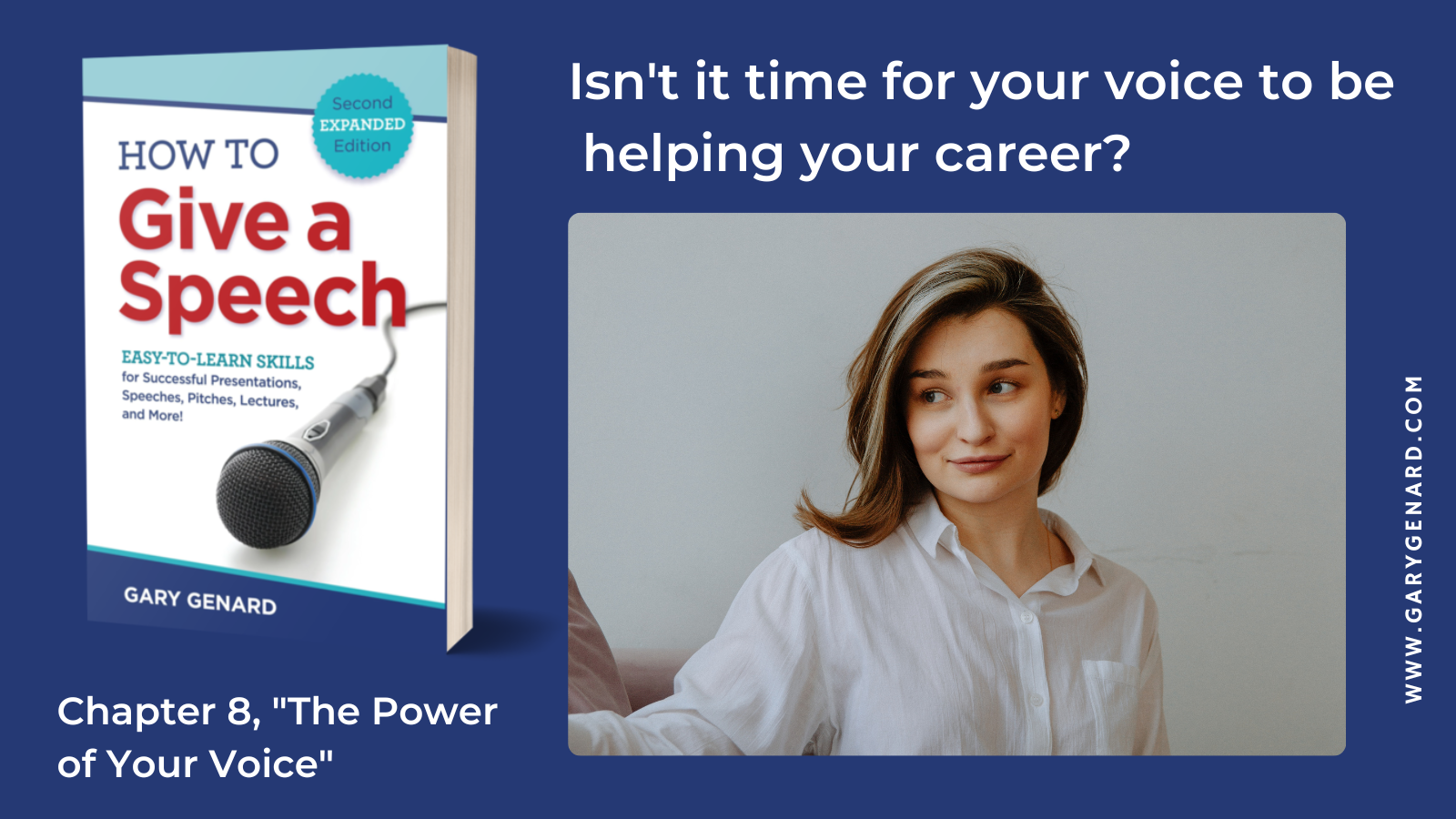Do you use too many vocal fillers like uh, um, like, and you know? Here's how to stop doing it, and also keep yourself from losing a friend!
Do you think you use the non-words “uh” and “um” too much in your speech?
Chances are, you don’t. These non-expressions—along with “like,” “okay,” “right,” “you know,” and even “so”—are called vocal fillers or vocalized pauses. Whatever name you give them, they can be as annoying for speakers as for listeners.
Is your voice all it could be? Find out in Chapter 8, "The Power of Your Voice," in my book How to Give a Speech. Discover 101 tips for improved speaking! Also find it on Amazon.
The Problem Is Smaller Than You Think. The truth is, vocal fillers aren't anywhere near the biggest problem you’ll face as a presenter. Actually, the perception of the problem is usually worse than the reality. We tend to focus on these minor verbal tics far too much, giving them greater importance than they usually deserve. You should learn how to speak as a leader, not how to mimic a metronome!
But somewhere along the line, someone probably mentioned that you say “uh” too much. From then on, every time you give a speech, all you hear is yourself saying “Uh” for what seems like a thousand times, and the rest of the speech disappears from your mind. But vocal fillers aren't what your audience is focusing on, and spending all your time trying to eliminate them doesn't help you in knowing the most effective ways to connect with an audience! Listeners are hoping to hear something of interest or importance to them. Getting that message across is what you should be alert to.
But if you insist on ridding your speech of vocal fillers, here are three ways you can do it:
-
Breathe. The easiest and possibly the most effective remedy for intrusive "non-fluencies" is to slow and deepen your breathing. The reason is quite simple: you can't breathe and speak at the same time. Inhalation fills your lungs, while exhalation creates the upward movement of air that carries the sounds your larynx is making outward. If you spend more time inhaling you won't be able to produce all those "uhs" and "ums."
If nervousness is making you speed up your delivery, take a look at my book Fearless Speaking, especially Chapter 3, "Breathing Techniques for Relaxation and Control."
- Discover the beauty of the pause. Pauses in public speaking are lovely things. Used sparingly and wisely, pauses are powerful vocal tools that allow listeners to reflect on the important point just made. They also aid your speeches by helping to vary your pacing. A presentation without pauses is like a 100-car freight train going by at a railroad crossing: endless and boring. Listeners need a mental rest now and then. Pauses accomplish that. Speakers who pause also sound confident, since they’re obviously not rushing to get the whole painful ordeal over with. Even better, pauses in a lengthy presentation are as refreshing as a sip of cool water on a sweltering day.
- Work with a tape recorder or video camera. With any unproductive habit, first becoming aware of the problem is the critical step. Among other things, recording yourself will help you find out whether vocal fillers are really an issue for you. At first, it will seem like you're hearing nothing but vocalized pauses. But give it time—you're just super-focused on the issue at the moment. Gradually, you’ll improve. It’s not a quick fix, but there really is no fast solution to this ingrained vocal practice (if it truly is a problem for you.)
Is your speaking style hurting your confidence? Speak with presence with Fearless Speaking, named "One of 100 Best Confidence Books Of All Time." Here it is on Amazon.
Here's my last suggestion: don't listen to the advice out there about enlisting the help of a friend who claps or raises his or her hand every time you use a vocal filler. You'll just get irritated, and more self-conscious than ever. Let your friend be the one saying after you've actually given the presentation: "Wow. That was great!"
Do you like mysteries or supernatural suspense? Gary is also the creator of the Dr. William Scarlet Mysteries. Book #1, Red Season, is now on sale here. Read it now!
You should follow me on Twitter here.

Gary Genard is an actor, author, and expert in public speaking and overcoming speaking fear. His company, The Genard Method offers live 1:1 Zoom executive coaching and corporate group training worldwide. He was named for nine consecutive years as One of the World’s Top 30 Communication Professionals, and also named as One of America's Top 5 Speech Coaches. He is the author of the Amazon Best-Seller How to Give a Speech. His second book, Fearless Speaking, was named in 2019 as "One of the 100 Best Confidence Books of All Time." His handbook for presenting in videoconferences, Speaking Virtually offers strategies and tools for developing virtual presence in online meetings. His latest book is Speak for Leadership: An Executive Speech Coach's Secrets for Developing Leadership Presence. Contact Gary here.






